Metro Data
Please cite use of this data as:
Tolbert, Caroline, and Mossberger, Karen, 2018, “U.S. Current Population Survey & American Community Survey Geographic Estimates of Internet Use, 1997-2016.”
The 1997-2016 estimates available here on the 50 largest Metropolitan Statistical Areas (MSAs) are unique, as metro area data on Internet use was not available before 2013. Additionally, the 2013 and 2014 metro estimates here are disaggregated for demographic groups, unlike the federal data for the American Community Survey.
Metropolitan areas form the basis of regional economies. They represent urbanized areas, with principal cities at their core, surrounded by suburban communities. Some metropolitan areas have several principal cities, including larger suburbs. Measures of Internet use across metros convey a sense of the capacity of the region to participate in the digital economy, where many jobs beyond the information technology sector involve some level of Internet use. Disparities between metro regions are evident in the data, and such disparities may affect workforce development, economic development, education and regional strategies for sharing information online about mass transit, health issues, and more. This data facilitates comparison across metropolitan areas, comparison over time within metropolitan areas, and comparison of rates of change across metros.
Maps available in Tableau show regional patterns, with higher rates of Internet use in the Northeast and West coast. Graphics in Tableau demonstrate that inequalities for demographic groups differ within metropolitan areas: some metros have particularly low rates for Internet use among disadvantaged groups, as well as lower rates by their populations overall. By clicking on the links for Tableau, users can access interactive maps that provide more information.
Metro Internet use is estimated from the Current Population Survey (1997-2012) and American Community Survey (ACS, 2013-2016). A group of random intercept logistic regressions (a type of multilevel model) are constructed for each of the Internet-related variables, namely, home Internet access, home broadband, mobile Internet, and fully-connected household (with broadband and mobile). Estimates are based on the U.S. Bureau of the Census Current Population Survey data for 1997, 1998, 2000, 2001, 2003, 2007, 2009, 2010, 2011, and 2012 and the U.S. Bureau of the Census American Community Survey 2013-2016, with estimates for missing years imputed via linear interpolation.
Using Summary Tables of the 2013-2016 American Community Survey available in FactFinder, Metro estimates were created for home Internet access and home broadband by race, ethnicity, education, age, and employment status.
Using microdata from the 2013 American Community Survey, Metro estimates were developed for home Internet access, home broadband, mobile Internet, and fully connected households broken down by race, ethnicity, education, age, family income, and language skill.
See Codebook here for a more complete description of the datasets, sources of data, survey questions, and methods. CodebookMethodsNSF_BB.pdf
Example summary figures of this Metro data are available here Metro_Figures.pdf
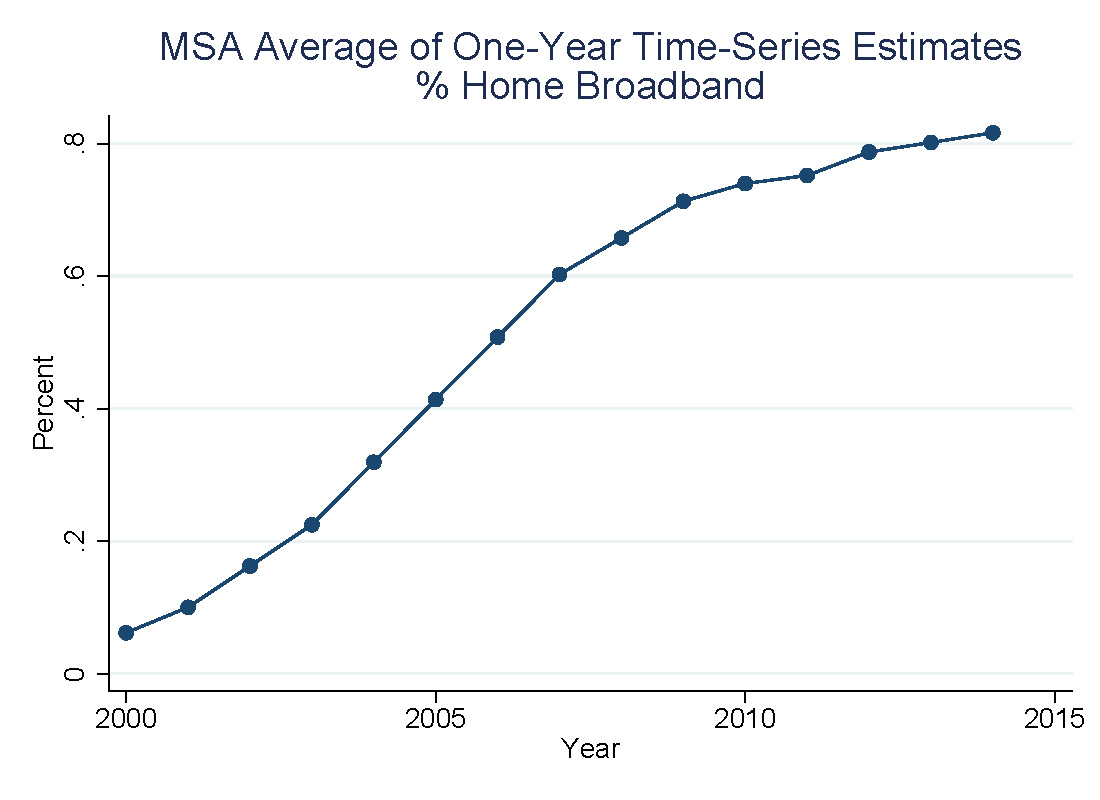
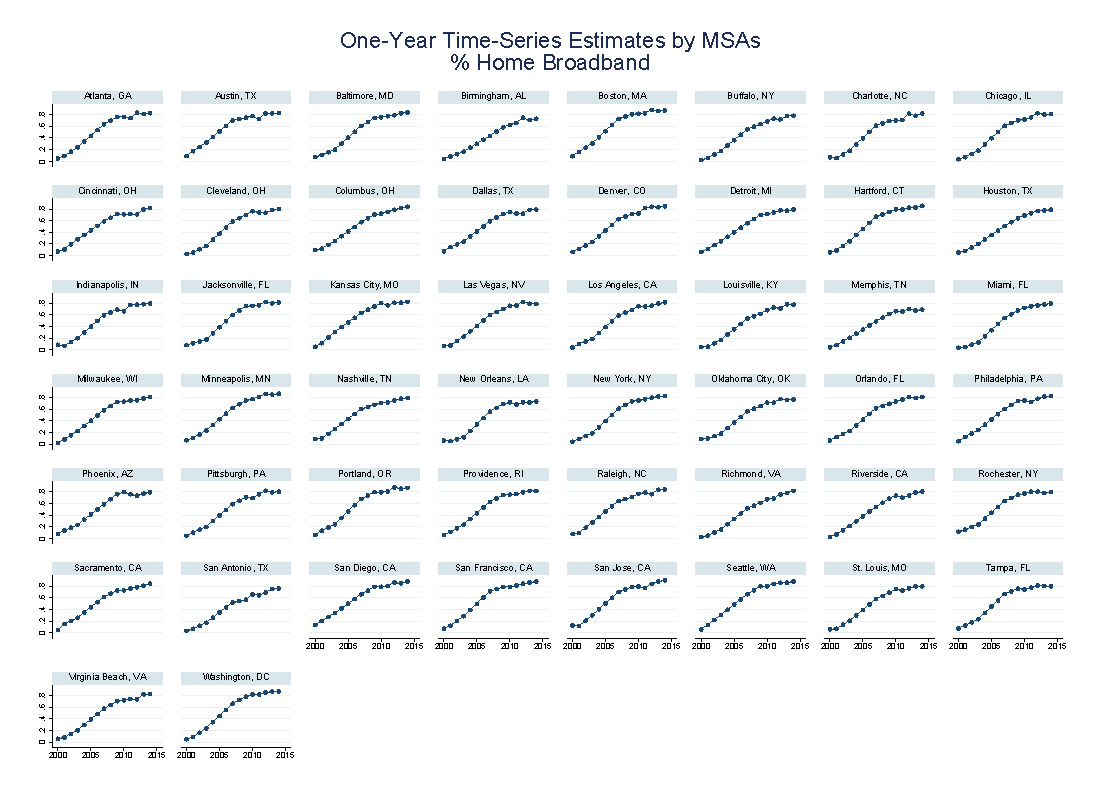

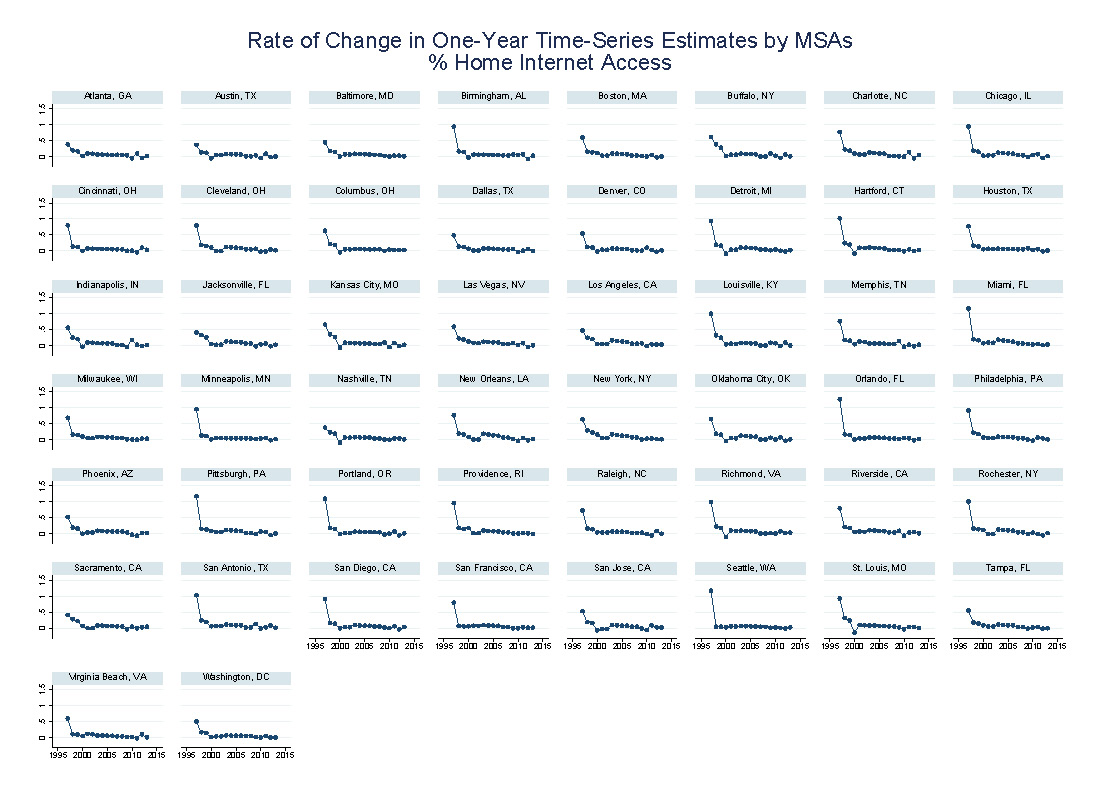
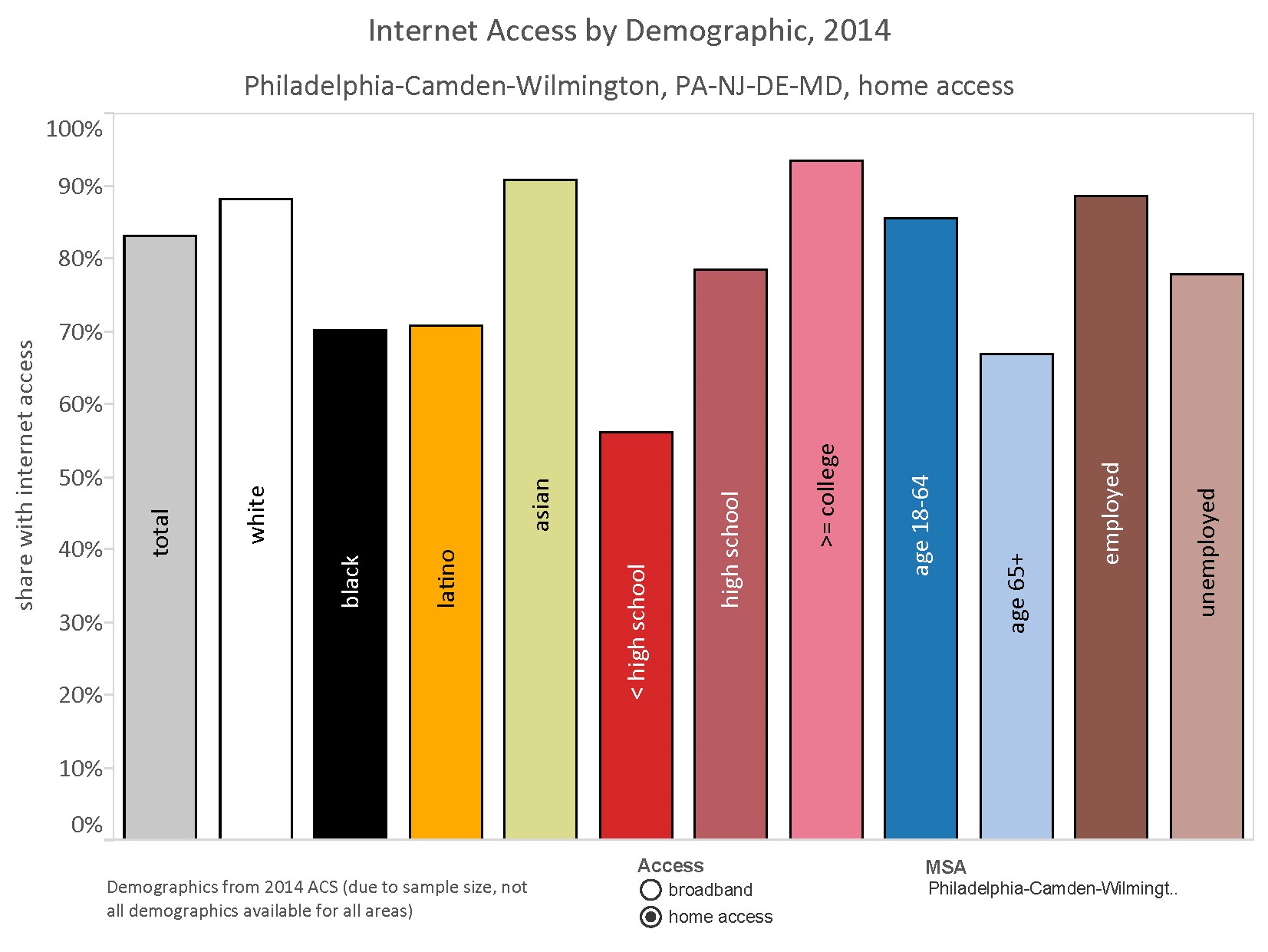
Tableau interactive graphic access (user chosen Metro area at bottom right of Tableau graphic)
Metro Internet Access by Demographic 2014
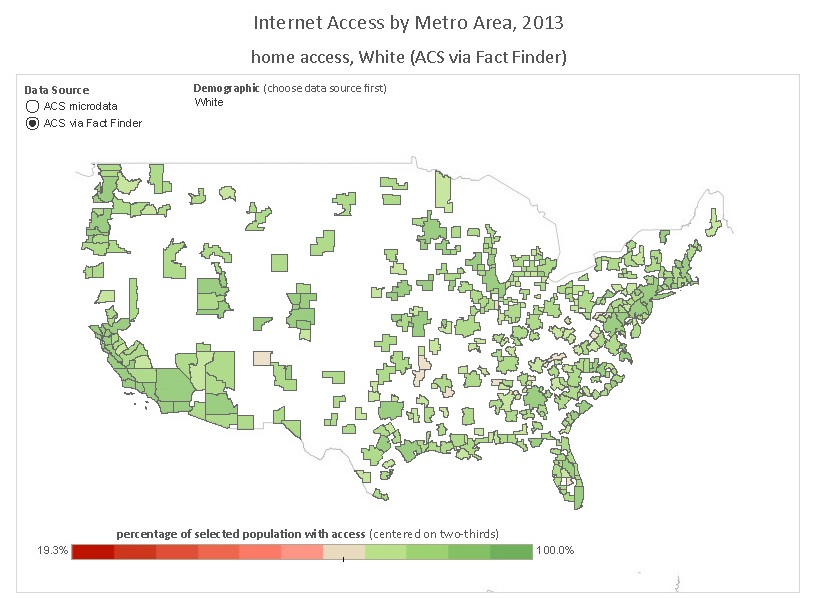 Tableau interactive map access (user chosen variables for map) rollover with mouse in Tableau to see individual data for counties. Choices include broadband access and home access for total population, white, black, Latino, Asian, education, age, employed/unemployed
Tableau interactive map access (user chosen variables for map) rollover with mouse in Tableau to see individual data for counties. Choices include broadband access and home access for total population, white, black, Latino, Asian, education, age, employed/unemployed
U.S. Metro Area Internet Acess 2013
DATA
This Metro Time Series data set contains the yearly estimates of the percentage of Internet use in U.S. metro areas along with their populations. The percentage of home Internet access goes back to 1997 from 2016, home broadband to 2000 from 2016, and mobile Internet and fully connected household to 2011 from 2016.
The CPS data is disaggregated with household weights to create the Internet estimates for 1997, 1998, 2000, 2001, 2003, 2007, 2009, 2010, 2011, and 2012. The ACS summary tables of metro areas from American FactFinder provide the Internet estimates for 2013 and 2014 and the estimates for the missing years are imputed via linear interpolation.
This Metro Three Year Average data set takes the three-year moving average of the Internet estimates. The data set contains the yearly estimates of the percentage of Internet use in U.S. metro areas. The percentage of home Internet access is estimated between 1998 and 2013, and home broadband between 2001 and 2013. Because of the very short time series, three-year moving averages are not estimated for mobile Internet and fully-connected household.
This Metro Time Services Change Rate data set is based on MetroTimeSeries.xls, and it estimates the yearly rate of change in the percentage of home Internet access, home broadband, mobile Internet, and fully-connected households in U.S. metro areas.
MetroThreeYearAverageChangeRate.xls
This Metro Three Year Average Change Rate data set is based on metroThreeYearAverage.xls, and it estimates the yearly rate of change in the percentage of home Internet access and home broadband in the U.S. metro areas.
MetroYearlySummaryStatistics.xls
This Metro Yearly Summary Statistics data contains the summary statistics of the percentage of Internet use in metro areas across years. It summarizes home Internet access, home broadband, mobile Internet, fully connected household for single-year metro estimates (metroTimeSeries.xls), and home Internet access and home broadband for three-year moving averages (metroThreeYearAverage.xls).
This Metro 2013 ACS Fact Finder data set contains the 2013 estimates of the percentage of Internet use in U.S. metro areas along with their 2013 populations. It is based on summary tables of the 2013 American Community Survey from American FactFinder. For home Internet access and home broadband, the estimates are broken down by race, ethnicity, education, age, and employment status.
This Metro 2013 ACS Microdata data set contains the 2013 estimates of the percentage of Internet use in U.S. metro areas. The estimates are generated by disaggregating the 2013 American Community Survey 1-Year Public Use Microdata Sample which was obtained through Minnesota Population Center. For home Internet access, home broadband, mobile Internet, and fully connected household, the estimates are broken down by race, ethnicity, education, age, family income, and language skill.
This Metro 2014 ACS Fact Finder data set contains the 2014 estimates of the percentage of Internet use in U.S. metro areas along with their 2014 populations. It is based on summary tables of the 2014 American Community Survey from American FactFinder. For home Internet access and home broadband, the estimates are broken down by race, ethnicity, education, age, and employment status.